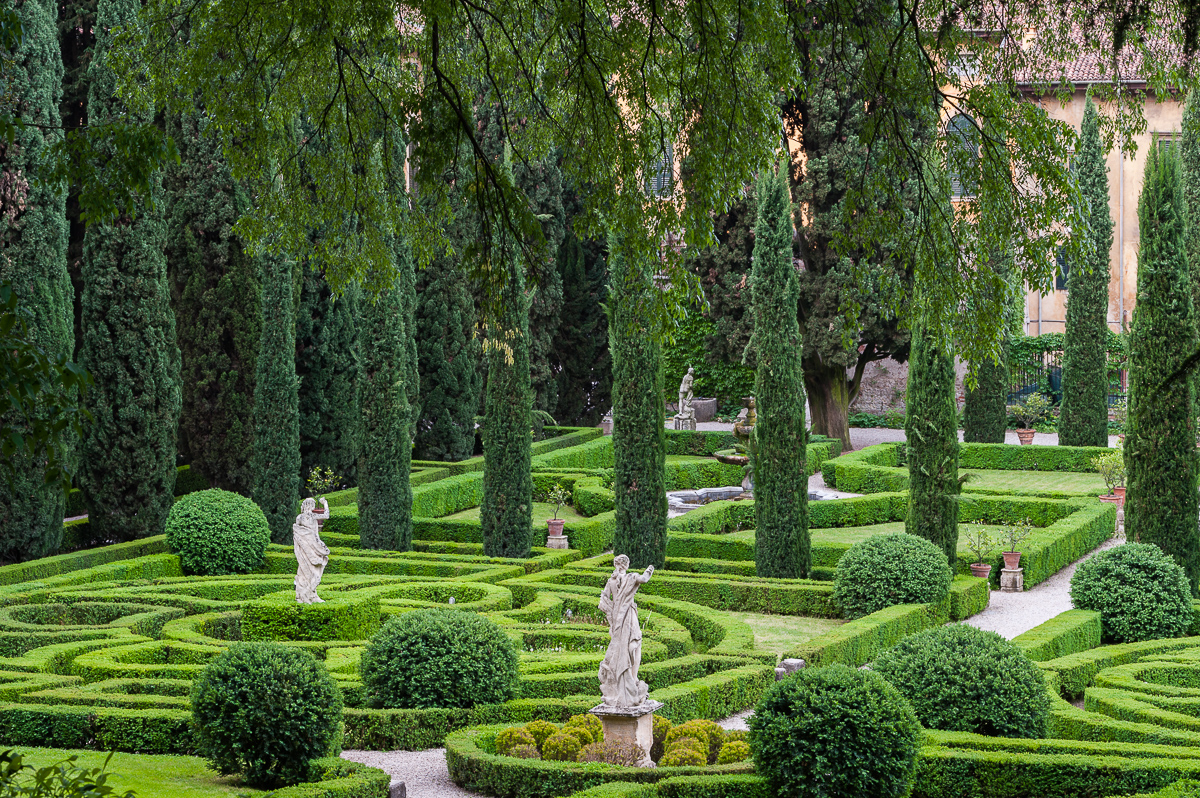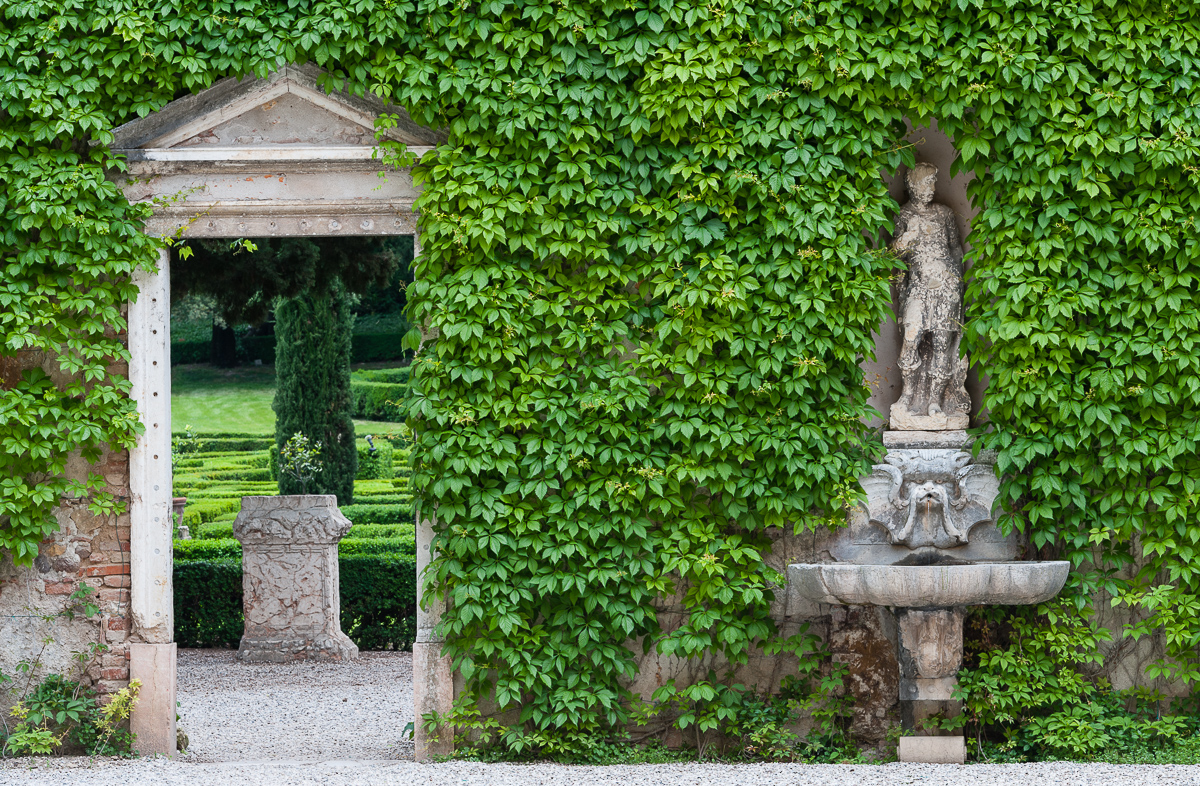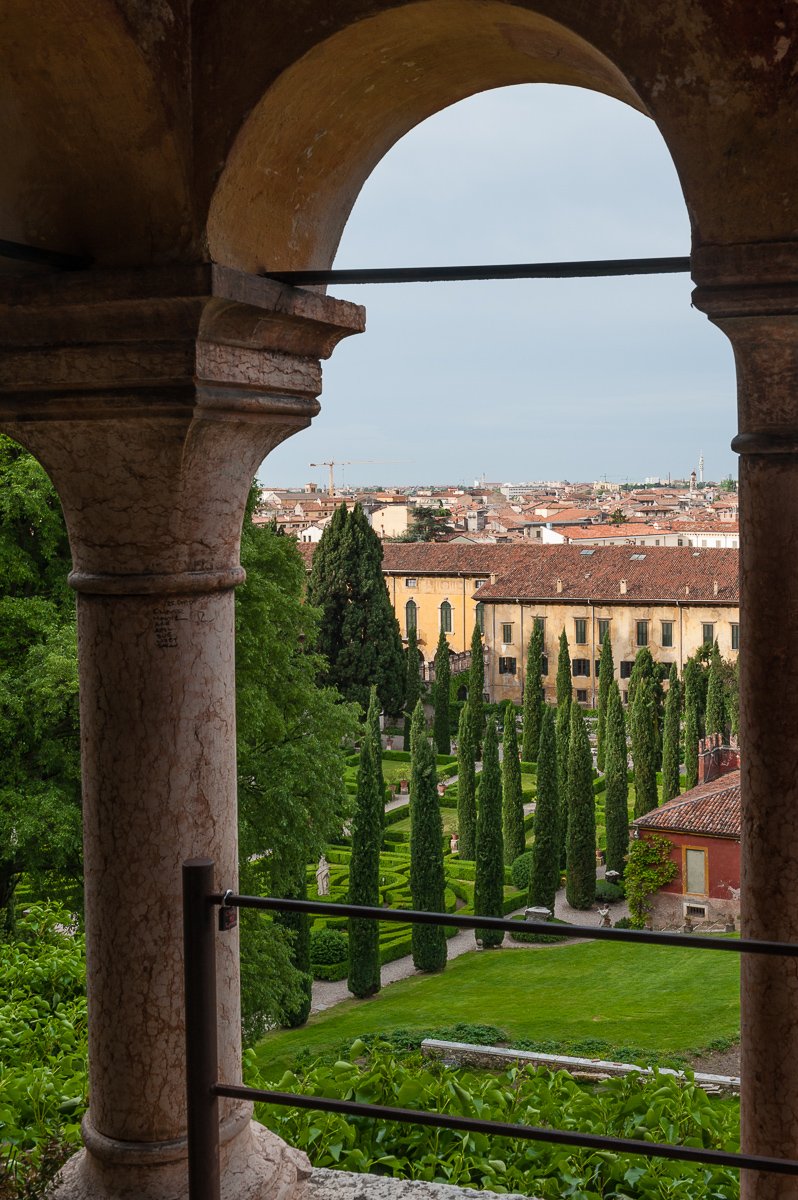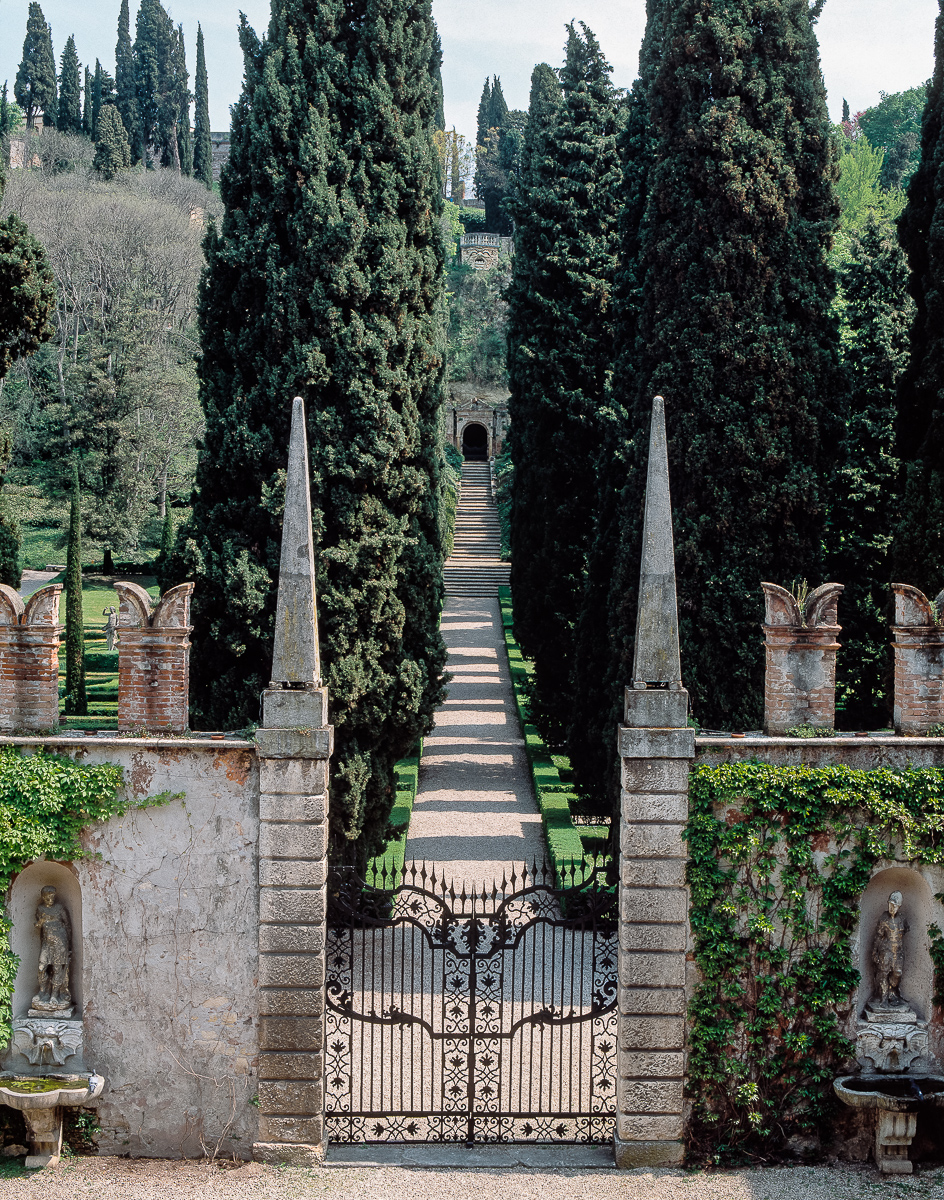Giardino Giusti in Verona and Villa Fracanzan Piovene: The centuries-old Italian gardens that evoke the romance of Romeo and Juliet
Jenny Condie takes a look at Giardino Giusti in Verona and Villa Fracanzan Piovene near Vicenza, and hails the partnership that will keep them safe for years to come. Photographs by Alex Ramsay.


‘Two households, both alike in dignity, in fair Verona where we lay our scene…’ were united by marriage in the 20th century and have since worked together to preserve their considerable and separate heritages, with the aim of consigning them to posterity in good repair.
Perhaps it wouldn’t have made such a good plotline for a play, but there is reason to be grateful nonetheless to the partnership of Nicolò Giusti del Giardino and Francesca Piovene, and their vigorous stewardship of two of northern Italy’s cultural jewels: the Giardino Giusti in Verona and Villa Fracanzan Piovene near Vicenza.
The name Giusti has been synonymous with one of Italy’s most celebrated Renaissance gardens since the late 16th century. Originally wool-dyers from Prato in Tuscany, the Giusti family had moved its business north in the previous century, settling in an unglamorous industrial suburb of Verona. Within a few generations, its members were rich and had also acquired the requisite antiquarian and artistic tastes of true Renaissance gentlefolk.
The garden created by Agostino Giusti between 1565 and 1580 was intended to fulfil various functions. It had to showcase his collection of Roman inscriptions and to serve as a setting for the lavish theatrical and musical productions—the predecessors of opera—then in vogue. To this day, the garden retains the surprise element of a stage set, presenting a magnificent and entertaining spectacle that totally confounds one’s expectations of a city garden.

Entering from a narrow street, the visitor is confronted with the sight, just visible through a wrought-iron gate, of an impossibly long avenue bordered by enormous cypresses ascending a distant slope. Steps lead up to a Classical pediment under which gapes a dark arched recess, and above, at an unexpectedly great height, a huge, grimacing stone mask juts out from bare rock. That recess, the centrepiece of the garden, was once a grotto, decorated with the most outlandish objects available to a 16th century garden owner.
Corals, scallop shells, mother-of-pearl and moss-covered artificial rocks were combined with painted landscapes and large sheets of glass reflecting the garden behind to create an infinite game of illusion. Sudden jets of water intensified the awestruck visitor’s disquiet, as eerie sounds came from another hollowed-out space in the cliff a little way off.
Clearly, a large part of what this scenographic garden was about was the eliciting of a kind of wonderment that was both frightening and exquisitely pleasurable. For 21st-century sensibilities, this might seem tame stuff, but on dark nights when flames and sparks are said to have been blown out of the mask, the effect would undoubtedly have been unnerving.
Exquisite houses, the beauty of Nature, and how to get the most from your life, straight to your inbox.
In deliberate contrast, the organisation of the lower garden into orderly compartments of box parterre containing brimming stone fountains or weathered mythological statues engenders a more contemplative mood. Here, the slow beat of symmetry, repetition and a restricted palette of deep greens is interrupted only by lemon trees in terracotta pots and by the famously treacherous labyrinth in which various celebrities of the past lost their bearings. Redesigned in 1786, it has mercifully low hedges these days.
The questions of how one conserves a garden such as this and whether it is acceptable to, say, peel away the layer of Romantic English landscaping style (yes), reinstate a row of cypress trees that were certainly present when Goethe visited in 1786 (yes) or dispense with the flowing French parterres that at some point in the past must have replaced the more strictly geometric Italian ones (probably never) is one that has exercised Nicolò Giusti for most of his life. He is currently handing over the reins to his cousin, Livia Imperiali, having completed his swansong: the restoration of the 20th century apartment in Palazzo Giusti, which is now open to the public for the first time.
The distinctive interior decoration, furniture and photographs tell a more recent, but no less fascinating family story. Indeed, Nicolò’s wife, Francesca Piovene, is an old hand at this. Villa Fracanzan Piovene soars into sight on a bend in a country road leading out of the small town of Orgiano on the southernmost tip of the Berici Hills.

A mountainous outcrop rising suddenly and steeply from the Veneto plain on the edge of Vicenza, the Berici were an obvious site on which to build the medieval strongholds, fortresses and castles that formed the backdrop to centuries of power struggles between feudal overlords. With the advent of more peaceful times, the Veneto nobility and their architects came here in search of sites less impervious, but which still offered a desirable elevation upon which to lay out their Classicising villas and gardens.
Several of Palladio’s most celebrated creations are here and the area continued to be favoured during the great villabuilding period precipitated by the erosion of Venice’s maritime empire and the consequent imperative to invest in the land. Those Venetian families who made the transition to land ownership had no intention, however, when overseeing the unfamiliar practices of the countryside, of renouncing the style to which they were accustomed.
Sumptuous ballrooms and grand reception rooms were transposed from the Grand Canal to the fields and ditches, as the glittering reflections of chandeliers in the water were replaced by the flashing of fireflies over rows of corn and hemp.
At Villa Fracanzan Piovene, from a wide terrace on the piano nobile, we can still admire the audacious gesture of ownership that is the spectacular 3,200ft-long avenue traversing the whole length of the property southwards. Ornamented by evenly spaced pairs of stone urns, it is crossed horizontally by the occasional line of tall rushes marking a ditch. Such orderly tranquillity is deceptive, however, as when the villa was built in 1710, this area was a hunting enclosure, filled with wild animals kept ready for the chase.
Entering the property from a side gate, the visitor finds himself at the farthest end of a grandly proportioned, rusticated portico that would have been the fulcrum of all villa activities. It projects from the sheltering roof of the single barchessa, a rural construction unique to the Veneto that housed the workshops, peasants’ accommodation, stables, storehouses, estate offices, hen houses and laundry rooms upon which the running of the villa’s estate depended.

Here, a Museum of Daily Villa Life and Work has been created, displaying some of the hundreds of agricultural implements, carpenter’s tools and household gadgets fashioned over the centuries to aid the backbreaking labour of the men and women employed at the villa.
When Contessa Francesca Giusti Piovene inherited the property, she and her husband moved into the upper floor of the barchessa where, in former times, silk worms had been reared. That left them free to plan a strategy for the villa’s survival. Now, the work is finally bearing fruit—as are the kitchen garden and orchard, painstakingly re-created in their own walled enclosure.
House and garden were both dilapidated and have taken years of investment and effort to imagine back into life. Where the garden was concerned, a conservative approach to restoration was essential. The once-clipped yews that had become hopelessly overgrown have been left to live out their naturally sprawling lives within box enclosures. Lemon trees and other citrus plants, formerly moved laboriously between the orangery and garden in pots, are now planted outside under low south-facing walls and take care of themselves.

The Contessa has allowed herself a few roses, but refrains from planting anything more demanding. Those memories of playing here as a little girl as her aunts weeded fussily around their beds of dahlias and antirrhinums must be strong. Simplicity and ease of maintenance are the priorities now. The villa hosts weddings, conferences and other events, offering a tasteful opulence and a majesty of scale that is unsurpassed, even in a region that counts some 4,000 historic villas.
At weekends throughout most of the year, people come to admire the rows of vintage tractors and walk around the villa’s beautifully furnished rooms, the star turn of which is the kitchen, with its timeless accretion of culinary utensils ranged around smoky walls that still seem to echo with the voices of cooks and the banging of copper pans.
From the worn red brick of the uneven floor to the Bakelite radio, the famous 16th century sink in red Verona marble to the burnt and blackened fireplace, it has the look of a room that could cope with any emergency, and that could provide any amount of sustenance. It perfectly epitomises Francesca and Nicolò’s thoughtful approach to conserving and recounting their family history.
From 11-16 October 2021 Country Life and Boxwood Tours will run a tour called 'Gardens & Palazzos of Venice & the Veneto', with regular Country Life contributor Charles Quest-Ritson among the guides. Highlights include a private boat across the Lagoon and up the Grand Canal to Hotel Monaco; a private visit to the flower-filled garden of Palazzo Cappello Malipiero Barnabò; an exploration of the fertile countryside of the Veneto, where we are invited to drinks and lunch with the Contessa Marina Emo in her Palladian-style Villa Emo at Rivella; a visit to the exquisite green theatre at Villa Rizzardi Pojega and the iconographical Villa Barbarigo, as well as one of Palladio’s finest villas. For more information on dates, itineraries and to book, please see www.boxwoodtours.co.uk or contact Boxwood Tours on 01341 429290 or mail@boxwoodtours.co.uk.
Country Life is unlike any other magazine: the only glossy weekly on the newsstand and the only magazine that has been guest-edited by His Majesty The King not once, but twice. It is a celebration of modern rural life and all its diverse joys and pleasures — that was first published in Queen Victoria's Diamond Jubilee year. Our eclectic mixture of witty and informative content — from the most up-to-date property news and commentary and a coveted glimpse inside some of the UK's best houses and gardens, to gardening, the arts and interior design, written by experts in their field — still cannot be found in print or online, anywhere else.
